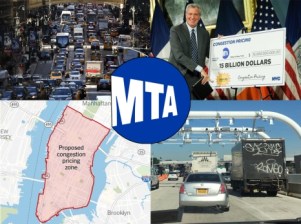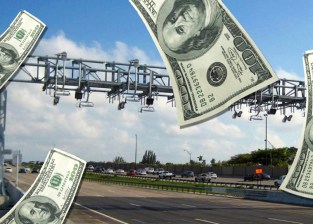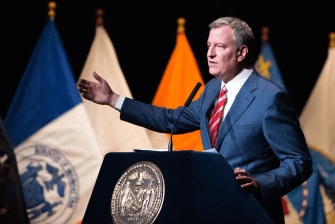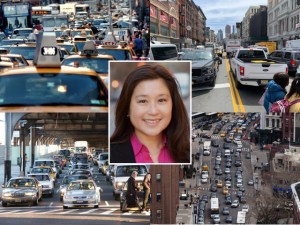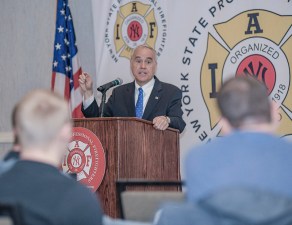Mythbuster: Congestion Pricing Study Shows Neighborhoods Won’t Be Flooded With Desperate Parkers
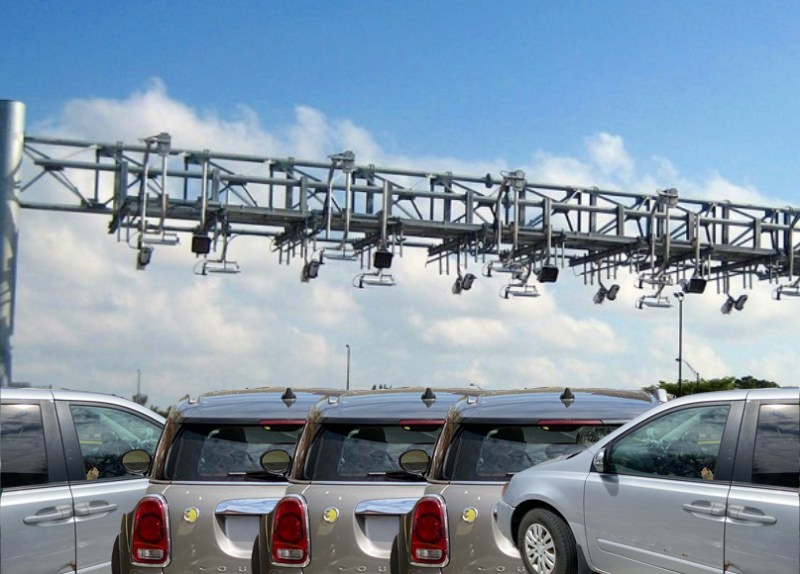
Time to park this fear in the dustbin of history.
The MTA’s environmental assessment for congestion pricing reveals that a long-held fear — namely that neighborhoods just outside the 60th Street toll boundary will be flooded with suburbanites looking for parking before finishing their commute by subway — just isn’t going to happen.
In the parking analyses done for the environmental study, the MTA’s traffic modelers wrote that, at worst, up-to-the-border driving would be a short-term phenomenon that would fade away as people realized that there just isn’t any parking.
“Although there could initially be some modest level of vehicular traffic searching for parking in neighborhoods outside the Manhattan CBD to avoid the toll, the behavior would most likely be short-lived as part of the adjustment process,” the agency wrote. “Time spent by motorists searching unsuccessfully for free, available parking just outside the Manhattan CBD boundary would eventually result in … overall reduction in vehicular traffic and an increase in transit use in the regional study area.”
The EA even notes that with the reduced travel demand inside the CBD, “fewer people may seek parking in the areas just inside the Manhattan CBD” and that the lack of trips south of 60th Street could actually lead to a parking glut in the neighborhoods just south of 60th Street.
Beyond the fact that it would be extremely annoying for people to search for on-street parking spots that already disappear faster than tickets to a Jacob deGrom start, the environmental assessment also contains a pair of charts that show the expected change in vehicle miles traveled broken down by areas inside and outside of the CBD. The blocks in Manhattan closest to the toll boundary, between 60th Street and 82nd Street, are predicted to see a 16.1-percent drop in VMT depending on the toll price, compared to a future where no toll is implemented. In Brooklyn and Queens neighborhoods near Manhattan, the VMT reductions could go as high as 10.3 percent in Long Island City, 14.5 percent in Downtown Brooklyn and 9.6 percent in Williamsburg.

The VMT reductions get lower further away 60th Street, but crucially, none of the Manhattan zones are predicted to see an increase in VMT, something that would indicate an influx of people driving around looking for parking near a subway station.
“I am pleasantly surprised,” said Manhattan Borough President Mark Levine. “I had expected that more people will be shopping for free street parking north of the zone because so many do that today around the five boroughs where people are looking for free parking on the streets and hopping on the subway to avoid paying for a garage. So I have heard that probably could be exacerbated and it’s great news that the the EA predicts the opposite result.”
Before he was the borough president, Levine was a two-term Council representative for a district comprising a swathe of the borough from the Upper West Side to Washington Heights. In that capacity, he pushed for residential parking permits as a solution to what he then predicted was going to be a traffic apocalypse as drivers tried to beat the toll by parking in his district. Levine said he accepted the analysis from the MTA, but added that a parking permit system was worth exploring as another source of revenue.
“There’s a problem already today with people coming in from the suburbs and parking their cars all over the streets when they come over the George Washington Bridge in the morning. If it actually gets alleviated by congestion pricing, there’s no need for a permitting system, but I think the possibility of lessening that effect and generating revenue makes it worth exploring still,” he said.
It’s yet to be seen whether the data in the assessment will be a final word on the subject of parking just outside the toll boundary. Multiple media outlets have run stories in the days after the assessment was released that did not mention the analysis that dispels the myth of a carpocalypse. But the fear has always been more of a vibes-based concern than one grounded in data or the experience of other cities that instituted congestion pricing, something that even supporters of neighborhood parking permits have run into when they commissioned studies on the idea.
For instance, longtime congestion pricing advocate and transportation economist Charles Komanoff looked at the potential for a park-and-ride problem in 2019, when congestion pricing was passed by the state legislature. Komanoff found that there wouldn’t be thousands of drivers attempting to beat the toll by parking outside it, but that at most 1,100 drivers total, or 1 percent of the daily total peak hour car private car trips into the CBD, would be converted into park-and-ride aficionados.
“Is 1,100 a lot?,” he wrote at the time. “Maybe to an obsessive — the type whose reaction to the dropping of the atomic bomb would have been, ‘Is it good for alternate-side-of-the-street parking?'”
Elected officials who have also taken a deeper look at the parking permit issue have also found that it wouldn’t “solve” the park-and-ride problem, since it doesn’t exist. Now-Council Member Gale Brewer commissioned a study on parking permits in 2019 when she was the Manhattan Borough President.
Brewer’s study noted that in London, under 1 percent of rail passengers at Tube stations after congestion pricing started were commuters who drove to the edge of the toll cordon and parked before getting on a train — behavior TfL chalked up to “normal background churn” in travel patterns. In Stockholm, even though the city opened almost 2,000 additional park-and-ride spots at commuter rail stations, “the city did not find any large-scale parking effects either on streets or in the newly created park-and-rides after congestion pricing was introduced.”
Brewer backed away from the findings, though, falling back on New York exceptionalism.
“I think New York is different,” said Brewer. “Obviously, I think there’ll be less [vehicle] miles [traveled] south of 60th Street, but I don’t know how they will impact the blocks north of 60th Street, I just don’t know. I look forward to hearing what others have to say.”
The Council member said that rather than take anything for granted, she’s going to start having meetings with various community players in her district to try to figure out what possible mitigation efforts they’ll want, whether that’s parking permits, better on-street signage or even just a PSA campaign telling prospective park and riders to stay away.
“I have received many, many calls, emails and complaint letters from people being concerned about this issue. It needs to be addressed,” she said. “Just to wipe it away and say, ‘Oh, no one’s gonna drive there,’ that’s not true. This isn’t happening tomorrow. … We’re gonna meet with the community board, with the BID, with DOT, police departments, elected officials and so on on a regular basis and have a discussion with the neighborhood about what people want.”
